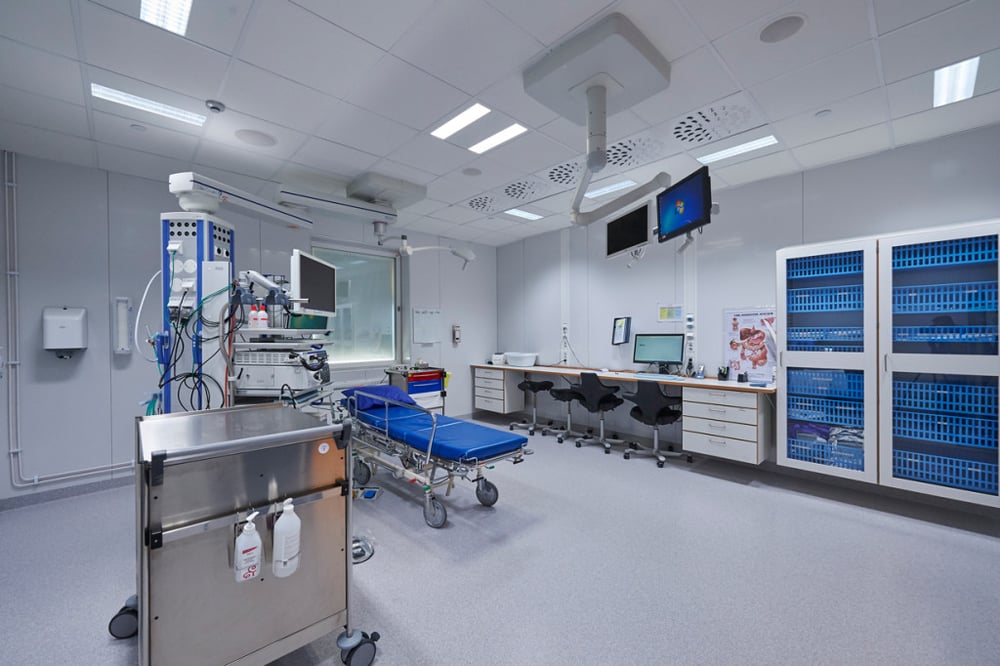According to Hillevi Hemphälä from Designforum at Lund University, lighting is crucial for creating a conducive work environment.
Based on the concept of "the eye leads the body," Hillevi Hemphälä is researching methods to improve the work environment for non-computer-related jobs by optimizing vision and lighting. Her empirical case studies demonstrate that ergonomically correct lighting increases productivity because employees have an easier time seeing their tasks, can focus better, and avoid headaches and muscle pain. Hillevi Hemphälä has conducted research on optimizing visual work environments among postal workers and employees at recycling stations and is currently working with operating room staff.
— My unique background in the field of occupational health stems from my initial education as an optician, shares Hillevi Hemphälä, before continuing:
— I developed a keen interest in the visual work environment during my optician training, which led me to pursue further studies at Lyshøjskolen in Jönköping for a year and a half. In 2008, I wrote my licentiate thesis at Linköping University on the topic of visual ergonomics within industrial work science, and currently, I am working towards a PhD in this field. My goal is to spread awareness about the importance of a good visual work environment. As an optician, I have an in-depth understanding of the functions of the eye. Visual impairments are closely linked to muscle strains, as the body compensates for any difficulties in seeing. People tend to squint their eyes and strain their necks, and if this persists for eight hours, it can result in headaches and neck/shoulder pain.

Researching the ergonomics of lighting in operating theatres
After conducting research on the relationship between lighting and efficiency among postal workers and employees at recycling stations, Hillevi Hemphälä is now focusing on the staff in operating theatres. She is currently collaborating with Christofer Rydenfält, who has written the thesis "A Study of a Hospital Operating Unit as a Foundation for Future Improvement" on the design of operating theatres that ensure optimal patient flow.
— In 2009, I began conducting studies on the ergonomics of lighting in an operating theatre in Helsingborg, shares Hillevi Hemphälä.
— I examined the current lighting conditions by measuring the illumination and luminance in the room. The overhead ambient lighting ranged from 500-1000 Lux, and in addition, operating lamps were used during open surgery, with an average of 100,000 Lux and a diameter of 15 cm. The interaction between ambient lighting and object lighting is influenced by the room's layout in relation to reflective, mirrored, and dazzling materials. The Lux value does not necessarily indicate whether there will be eye injuries or inappropriate lighting in the operating theatre, she explains.
In-depth analysis of the prerequisites for optimal lighting conditions
— Alongside the initial investigations into the lighting conditions in the operating theatre, I examined the individual needs of the staff involved. This included identifying those who required glasses, had light sensitivity, or experienced headaches or muscle pain. Furthermore, I explored the official recommendations for lighting in operating theatres, explains Hillevi Hemphälä.
According to the International Standard for Lighting of Indoor Workspaces ISO/CIE, there are no specific recommendations for Healthcare/Operating Theatres, only a note indicating 10,000 to 100,000 Lux on the operating table. In comparison, the equivalent North American standard is 25,000 lux.
— I reached out to Illuminating Engineering Society specialist John Selander to learn how these recommendations are defined. Additionally, I contacted several manufacturers of operating lamps to understand how they determine the capacity of their lamps, she adds.
Understanding the commercial background behind producing lighting for operating theatres is intriguing to me.
— Hillevi Hemphälä
Interdisciplinary visual ergonomic research
— I have applied for and been granted funding from the Bertil & Britt Svenssons Foundation for Lighting Technology to continue my research on the visual work environment in operating theatres, says Hillevi Hemphälä.
— In January and February of 2012, I will proceed with the investigations in the operating theatre in Helsingborg. Initially, I will conduct various tests with white light, considering factors such as Lux levels, glare, the balance between ambient lighting and object lighting, and more. In the field of visual ergonomics, it is crucial to work interdisciplinary to achieve the best results. Therefore, in April 2010, we initiated a multidisciplinary Nordic research network called "Visual Ergonomic Society/ErgoVisionNet". This network includes doctors, psychologists, ergonomists, opticians, and architects with an interest in visual ergonomics. Our goal is to enhance well-being, health, and productivity in workplaces and homes through improved visual environments. My research is a step in that direction, concludes Hillevi Hemphälä.

